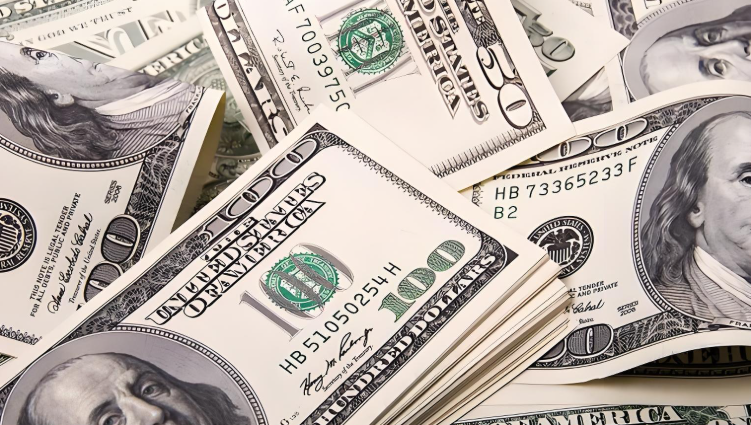As we step into the first trading week of 2025, the US dollar demonstrates remarkable strength, potentially marking its best weekly performance in over a month. This upward shift is largely due to optimistic market forecasts anticipating a slowing down of interest rate cuts by the Federal Reserve this year, paired with expectations that the US economy will continue to outpace other global economies.
According to Charu Chanana, Chief Investment Strategist at Saxo Bank, the prevailing narrative of "American Exceptionalism" is likely to sustain the dollar's strength in early 2025. High yields on US Treasury bonds enhance the dollar's appeal, and the uncertainties surrounding the incoming government's policies further underscore the dollar's allure as a safe-haven investment.
The Federal Reserve's monetary policy direction has always been a critical determinant of the dollar's trajectory. Recently, the market consensus seems to be leaning toward a reduction in the magnitude of interest rate cuts this year; this reflects the underlying resilience of the US economy. Over recent years, the performance of the US economy has been relatively robust, exhibiting more pronounced growth compared to other global economies. These factors collectively contribute to the dollar's ascendancy.
Additionally, the high yields on US government bonds provide extra support for the dollar. As the US economy continues to grow and inflationary pressures escalate, bond yields have risen accordingly, attracting significant capital inflows into the American market. This has not only led to an appreciation of the dollar but also reinforced its position in the global financial landscape.
However, the unpredictability surrounding the policies of the incoming government presents a layer of uncertain appeal to the dollar. Market participants are closely monitoring the economic policies to be adopted by the US government and the potential repercussions these policies may have on the global economic and financial environment. In the face of such unpredictability, investors tend to favor safe-haven assets, and the dollar, recognized as a traditional safe-haven currency, naturally emerges as their preferred choice.
Looking ahead, the trajectory of the dollar remains susceptible to multiple influences. On one hand, the Federal Reserve's monetary policy will continue to hold significant sway over the dollar's performance. Should the Fed indeed curtail the pace of rate cuts this year, this could further solidify the dollar's robust stance. On the other hand, global economic conditions and geopolitical risks may also play a crucial role. If the global economy encounters instability or if geopolitical tensions escalate, the dollar could see an increase in demand as investors retreat to safe haven assets, resulting in further appreciation.

Nevertheless, investors must remain vigilant regarding the potential risks accompanying the dollar’s strength. On one front, a strong dollar could adversely affect the global economy, as an appreciating dollar may lead to the depreciation of other currencies, thereby exacerbating trade deficits and increasing debt burdens for those countries. On another front, a strong dollar may also negatively impact the United States itself; as the dollar strengthens, the competitiveness of US exports may diminish, which could hinder domestic economic growth.
In summary, as we approach 2025, the dollar is launching itself from a position of strength, bolstered by a clear and compelling set of supporting factors. The market's anticipation of the Federal Reserve's reduced pace of rate cuts is undoubtedly a key driving force behind the dollar's advance. Being a bellwether for global monetary policy, the Fed's decisions resonate through the global financial markets. Consequently, when there is widespread belief that the Fed may slow its rate-cutting strategy, it signals that the yields of dollar-denominated assets are comparatively more attractive than those of other currencies, drawing a tide of international capital back to the US and flooding the dollar asset market, thus significantly enhancing demand for the dollar.
Furthermore, the expectation that the US economy will continue to lead other global economies provides the dollar with an additional shot of confidence. As the world's largest economy, the strength of the United States' performance carries profound implications for the global economic hierarchy. Should the US economy sustain its growth trajectory and maintain a dominant position globally, investor confidence in the dollar could see a considerable upsurge, fortifying its stronghold.
However, it is crucial to recognize that the dollar's ascension is not without its downsides, and investors must remain cautious of the inherent risks. The strength of the dollar can drive the currencies of other nations to weaken, escalating external debt burdens that could precipitate a debt crisis, which in turn threatens global financial stability. Additionally, the complexities of the global economic environment, compounded by emerging geopolitical risks, can lead to sudden shocks, such as regional conflicts or trade disputes that can disrupt market expectations, creating turbulence in financial markets. In such scenarios, the dollar's current trend could also reverse.
Therefore, while formulating investment strategies, investors need to adopt a holistic approach, carefully considering these multifaceted influences. It is essential not only to focus on the current robust performance of the dollar but to conduct a thorough assessment of potential risks while also evaluating their capacity for risk tolerance diligently.